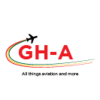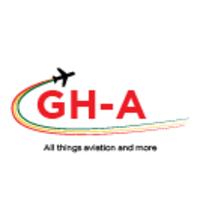26th Jul 2019 | Elizabeth Sasu
Access to financial capital and human resources were cited by these two aircraft operators as largest concerns in Africa
Africa World Airlines technicians finishing a maintenance task on left engine.
AFRICA WORLD AIRLINES
In 2016, the continent of Africa had an estimated population of 1.2 billion people, statistics pulled from the Worldwide Web state. Africa is home to 54 recognized sovereign states and countries, nine territories and two de facto independent states. I have never set foot on the continent, but have often thought about experiencing some aviation there. I speculate on how aviation services, in particular aircraft maintenance, would differ or perhaps be similar to what we are accustomed to here in North America.
The vast differences in geography, population, financial development, and political climates all appear to play a huge role in the development of any industry or business on the continent. The great distances within Africa make air-travel a must, yet much of aviation and associated maintenance development continues to be challenged.
Africa is home to major and regional airlines, a developing business aviation segment, and busy general aviation operators flying people and goods around both developed and remote areas and different countries of the continent.
I reached out to a few different companies and asked them about their aircraft maintenance operation, experiences, and perspectives.
From the West Coast
Africa World Airlines Limited (AWA) is a Ghanaian registered private-sector company. The airline was incorporated on Nov. 15, 2010 and received its air carrier license (ACL) from Ghana Civil Aviation Authority (GCAA) in March 2011 with its first flight on Sept. 21, 2012.
According to Africa World Airlines chief operating officer Sean Mendis, AWA operates a fleet of eight Embraer ERJ-145LRs and has continued to develop and grow its internal maintenance capabilities. Mendis says, “After depending heavily on AMOs in the initial stages of our operation, we now do our own line maintenance and recently received LMO (line maintenance organization) certification from Ghana Civil Aviation Authority to conduct checkups to and including A-checks. We have also taken over our own Continuing Airworthiness management, as well as developed our own reliability group that recently was recognized by Embraer for providing the highest quality reliability data among Embraer 145 operators worldwide.”
AWA has also developed in-house wheel and battery shops, and is in the process of setting up its own nondestructive inspection/testing facility.
Mendis goes on to say, “Our medium term goal is to be able to certify ourselves as an AMO, initially for the purpose of conducting our own base maintenance and potentially offering third-party services after that.” AWA currently uses two AMOs for maintenance above their internal capability and for C-checks.
COO Mendis says, “Aviation maintenance in West Africa is challenging. Not only is there a lack of indigenous maintenance facilities in the region, but the hidden costs such as shipping, customs, etc., often add 30 to 50 percent in costs as well as additional turnaround time.”
As for the airline’s biggest challenge, Mendis points to the lack of qualified and experienced staff as the biggest challenge to all aspects of maintenance. “Licensing processes effectively require young engineers to study abroad for FAA/EASA licenses, then return home and get these validated/converted before they are able to actually certify maintenance. There needs to be a better training and licensing system in the region that allows the most talented engineers to develop, as opposed to only those who are able to afford the training process,” the COO says.
AWA has invested in young talent at an early stage by offering internships for young engineering students where they work with AWA during their school breaks, allowing them to get hands-on experience. This also permits them to evaluate potential engineers for future employment. Mendis explains, “We then invest in these fresh graduates by giving those hands -on experience, as well as offering loans for them to complete their licensing exams. It is a matter of some pride for us that a number of the young graduates we hired as the airline was setting up are now fully licensed and releasing aircraft on the line every day.”
Mendis admits though that this talent pipeline is a slow one, and they are forced to rely on higher-priced expatriates to plug short-term skill shortages that inevitably crop up in a growing airline. The COO says, “Nonetheless, we are hopeful that our investment in young talent will be a viable longer term strategy.”
Mendis concludes with this, “There is no reason that an African maintenance organization cannot deliver international standard work, despite the logistical and resource challenges in the region. Unfortunately, Africa in general has a bad reputation when it comes to maintenance standards so there is a bit of extra work that needs to be done to establish credibility.”
From East Africa
Dawit Lemma is the CEO of Krimson, the Ethiopia-based aviation services company, located at Addis Ababa Bole International Airport. Krimson offers 24/7 support for a range of aviation services including ground handling, flight support, refueling, charter brokerage, and aviation consulting. Krimson works with a range of aviation customers including commercial airlines, business aviation operators, and trip planning companies from around the world that take advantage of Krimson’s local expertise in Ethiopia and across Africa.
Lemma says, “From a maintenance perspective, we have more of an advisory/consulting role.” One example cited was that for the past couple of years, Krimson has been working with Jet Support Services Inc. (JSSI) to assist it with creating awareness of its power-by-the-hour program and entry into market. This alleviates some of the human resource burden, but also introduces a new concept for maintenance solutions and allows operators to focus resources on other critical elements of their operation. He goes on to say, “There are also several American and European based MRO service providers that we are working with on market entry into either Ethiopia or the East African region: from aircraft and engine OEMS, to parts suppliers, even CAMO service providers.”
Lemma characterizes the aviation industry in this way, “The airline industry is competitive as there are three successful major flag carriers in the region: Ethiopian Airlines, Kenya Airways, and RwandAir. On the other hand, the airline services private sector in other countries, it is very poor, except for Kenya which is a liberal market with a very healthy and burgeoning domestic and regional airline sector.”
As for the general and business aviation activity, he says, “General aviation is more predominant than business aviation. Turboprops very much dominate the region, with very few corporate jets. Tourism, medevac, and humanitarian missions dominate general aviation operations.”
What Is the Biggest Challenge?
The answer across the continent is nearly the same. Lemma describes it like this: “Maintenance is capital intensive (tools, parts, components, facilities, etc.), but also very labor intensive. Qualified labor is difficult to find. Ethiopian Airlines, the largest airline in Africa with the largest Aviation Academy in Africa, has addressed this challenge with significant investment in maintenance technician training, not only for their own fleet but those of several other African airlines. Still, the demand for trained technicians outpaces the supply in the region and the continent. With the shortage of qualified technical staff, retention is very challenging. It’s common place for a technician to have worked for several MRO service providers in just a short period of time.”
When asked what the greatest attributes are for an African maintenance organization should be Lemma comments relationships and networks with other aviation operators, and again, reputation for quality work and on-time service delivery.
A Global MRO Perspective
The German-based turbine engine MRO, MTU Maintenance has several customers on the African continent including, Air Algerie, Air Burkina, Egyptair, Nesma Airlines, Nile Air, Rwandair, Tunisair, and Kenya Airways among others.
Clive Rankin, sales director Africa for MTU Maintenance, gives this interesting characterization. “MRO infrastructure in Africa is currently limited, with only some of the bigger airlines running maintenance facilities. Other independent MRO and OEM facilities are rare in the region, often being put off by the restrictive political, geographical, and economic factors that obfuscate a business case. Many African carriers are also experiencing a shortage of human capital and struggling to keep qualified engineers, maintenance, and safety personnel. As such, partnering with a reliable and established MRO provider is a good way forward.”
Rankin feels the aviation industry has large potential, but also hurdles to overcome. Population size and poor public transport infrastructure make the region ripe for an aviation boom. But GDP, national politics, high operating costs, taxes, fees, and strong competition from Middle Eastern and Asian carriers provide challenges for airlines. This overall trend is also visible in the MRO sector.
Krimson Supports Next Generation of African Aviators in Addis Ababa
As the aviation industry faces an increasingly challenging recruitment environment, Krimson is playing its part to support education at the grass-roots level. Dawit Lemma, Krimson CEO, is providing volunteer teaching services to students by taking the Brevet d’Initiation Aéronautique (BIA) course at the Lycée Guébré-Mariam, an Ethio-French school teaching Francophone pupils from nursery up to high school age in Addis Ababa. The weekly delivery of the two-hour educational sessions are shared with industry colleague Pierre Lucas, United Nations Humanitarian Air Service, UNHAS, Cchief – Ethiopia.
The class covers the fundamentals of aviation and aims to bring real-world experience to the academic studies. Upon successful completion of the one-year course, and passing of the standardized examination, students receive credit toward earning their private pilot license, PPL. The BIA, which was created in 1968, is certified by the French Ministry of Education. Each year some 3,500 high school students choose this optional curriculum as part of the French public education system. This is the second year the Lycée Guébré-Mariam has offered the course.
The BIA course covers five main subjects in aviation: weather and meteorology, navigation, flight dynamics, aircraft systems, and aviation history. An optional module in aeronautical English is also part of the curriculum. As a qualified pilot and aviation services provider, Lemma shares his aviation knowledge and uses personal anecdotes to showcase the diversity of aviation which helps the students understand the complexity of the industry. “It’s a great honor to be supporting the next generation of aviators here in Africa,” says Lemma. “It is well known that African economies are strengthening and consequently the need for aviation to support this growth will drive the need for more aviation professionals. Sharing our knowledge with the students is a real joy for us, and more importantly it helps them understand the practical reality of working in the aviation sector,” says Lemma.
Source: aviationpros






Post comments (0)